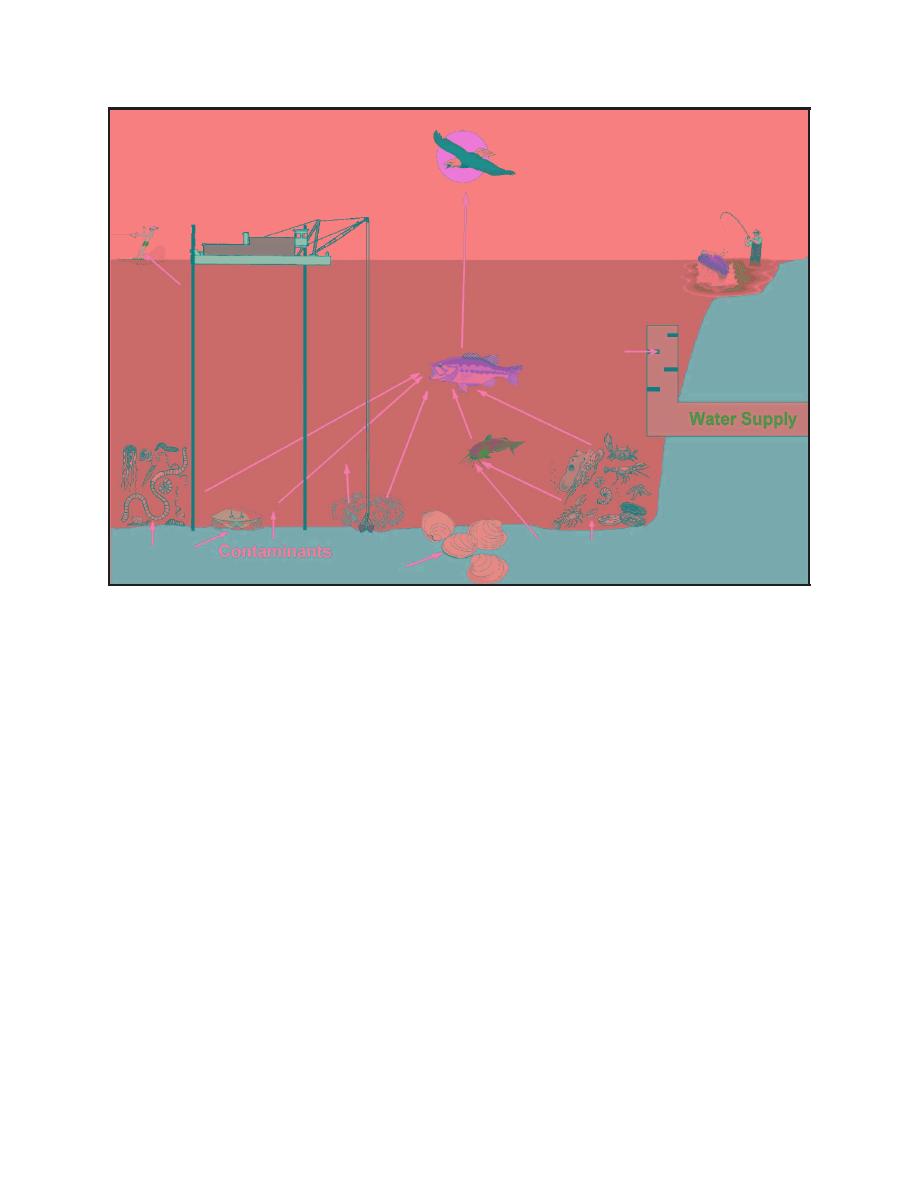 |
||
|
|
||
|
Page Title:
Figure 9. Dredging pathways scenario |
||
| |||||||||||||||
|
|
 Figure 9. Dredging pathways scenario
sources include precipitation, dissolution, resuspension, sedimentation, diffusion, adsorption, vola-
tilization, decay, and burial as shown in Figure 4. Potential pathways from the sources to the
receptors include ingestion of the sediments or water, direct contact with sediment or water,
bioconcentration from the water column, and bio-uptake of organisms. The receptors are humans,
piscivorous birds, pelagic fish, forage fish, bottom fish, benthos, and zooplankton.
Figure 10 shows the dredging scenario as implemented in ARAMS/FRAMES. Implementation of
the scenario begins with selection of the contaminants of concern and the receptor species. In the
generic scenario, the contaminant properties are selected from the FRAMES chemical database, and
ecological benchmark data for the chemical effects on receptors are selected from the ERED
database. Next, the source module, RECOVERY, is selected to describe the initial conditions in
the water column and temporal loadings from nonpoint sources, point sources, and inflow. The
source module is linked with the surface water modules. The RECOVERY and DREDGE models
were selected to model the contaminant interactions between the sediment, water column, and
atmosphere because of their flexibility and ease of use. Output from RECOVERY was linked to
ecological and human exposure models within FRAMES. Output from DREDGE was linked only
to ecological exposure modules because the transient exposure area is typically void of human
activities.
|
|
Privacy Statement - Press Release - Copyright Information. - Contact Us - Support Integrated Publishing |